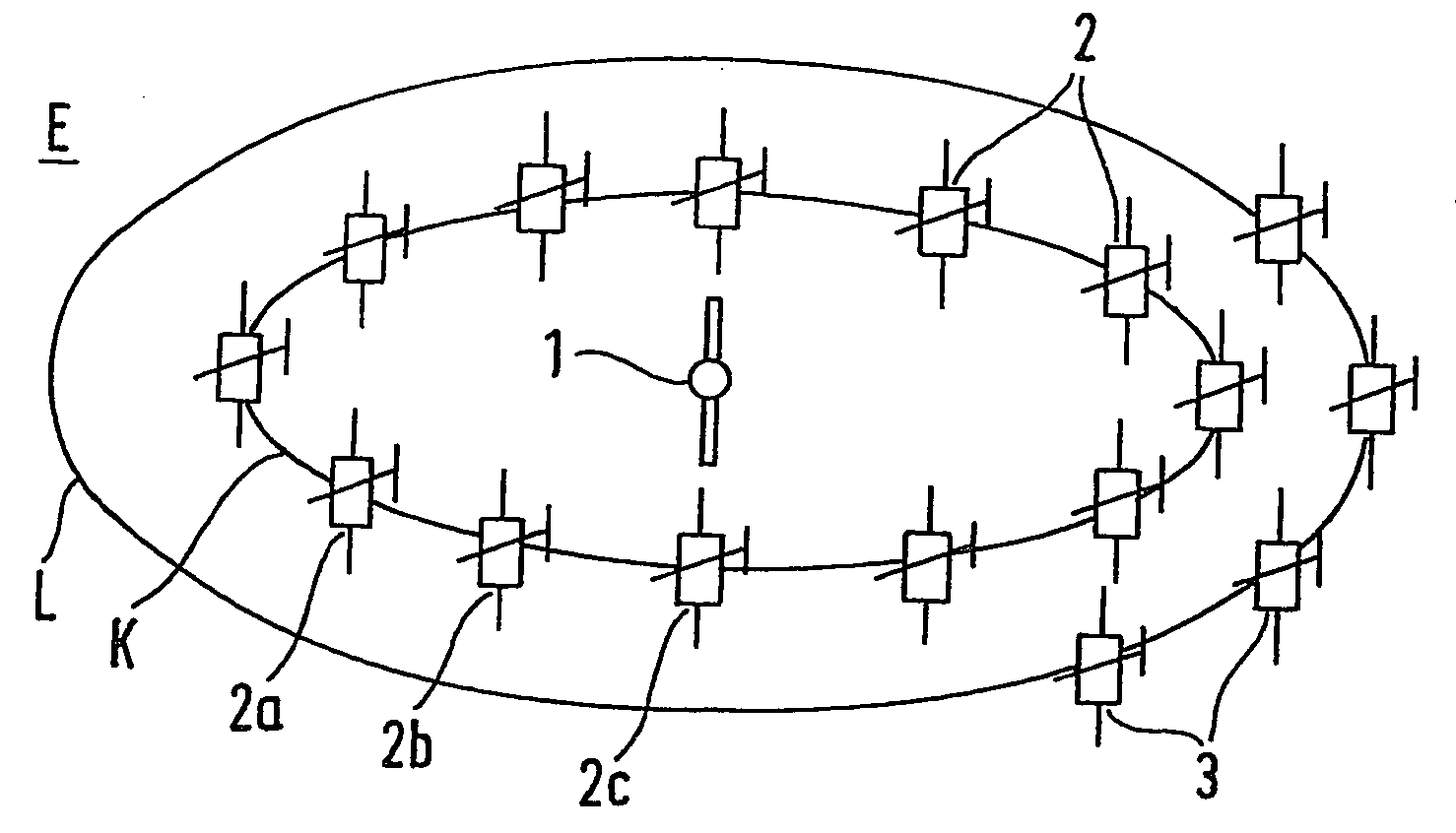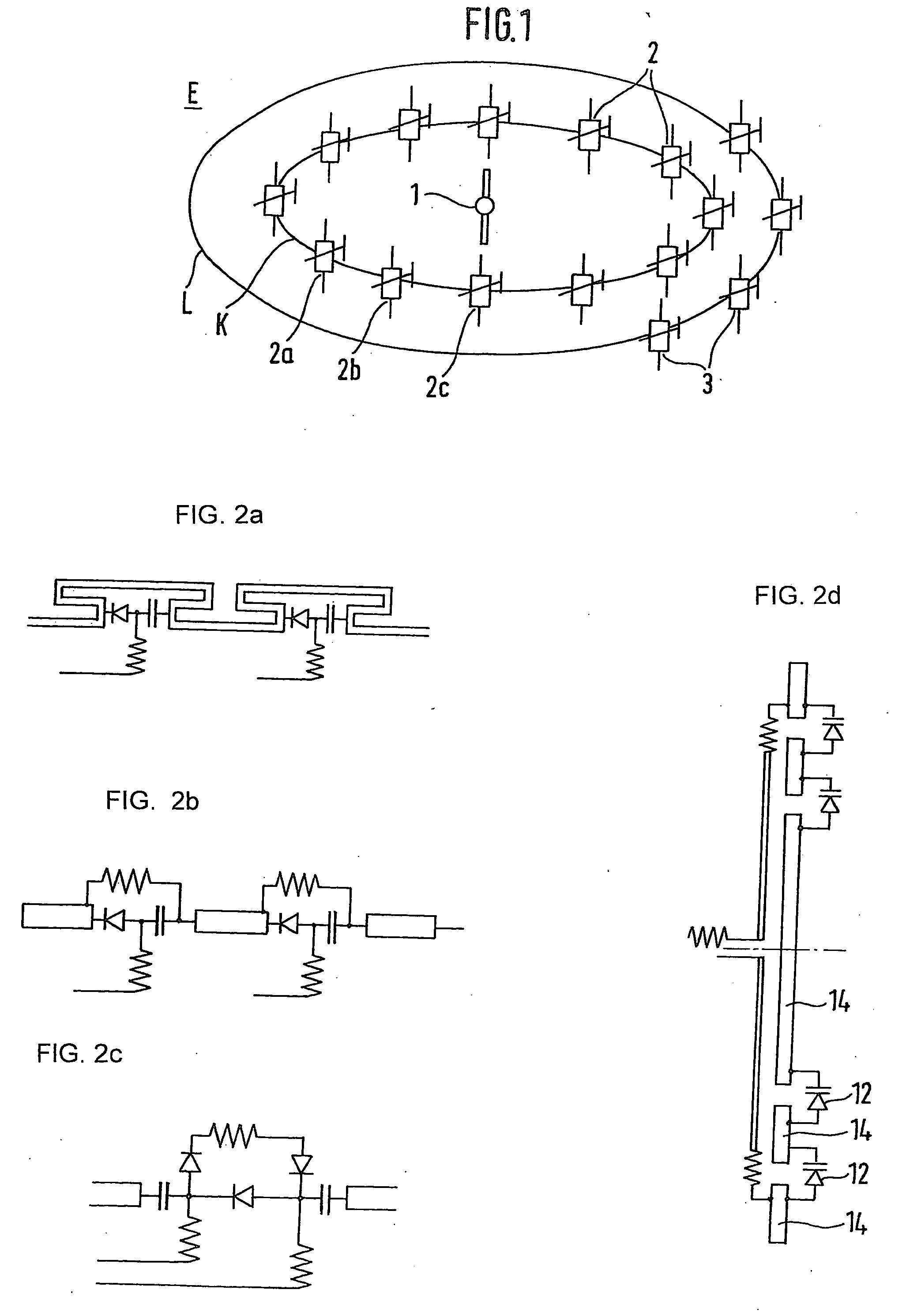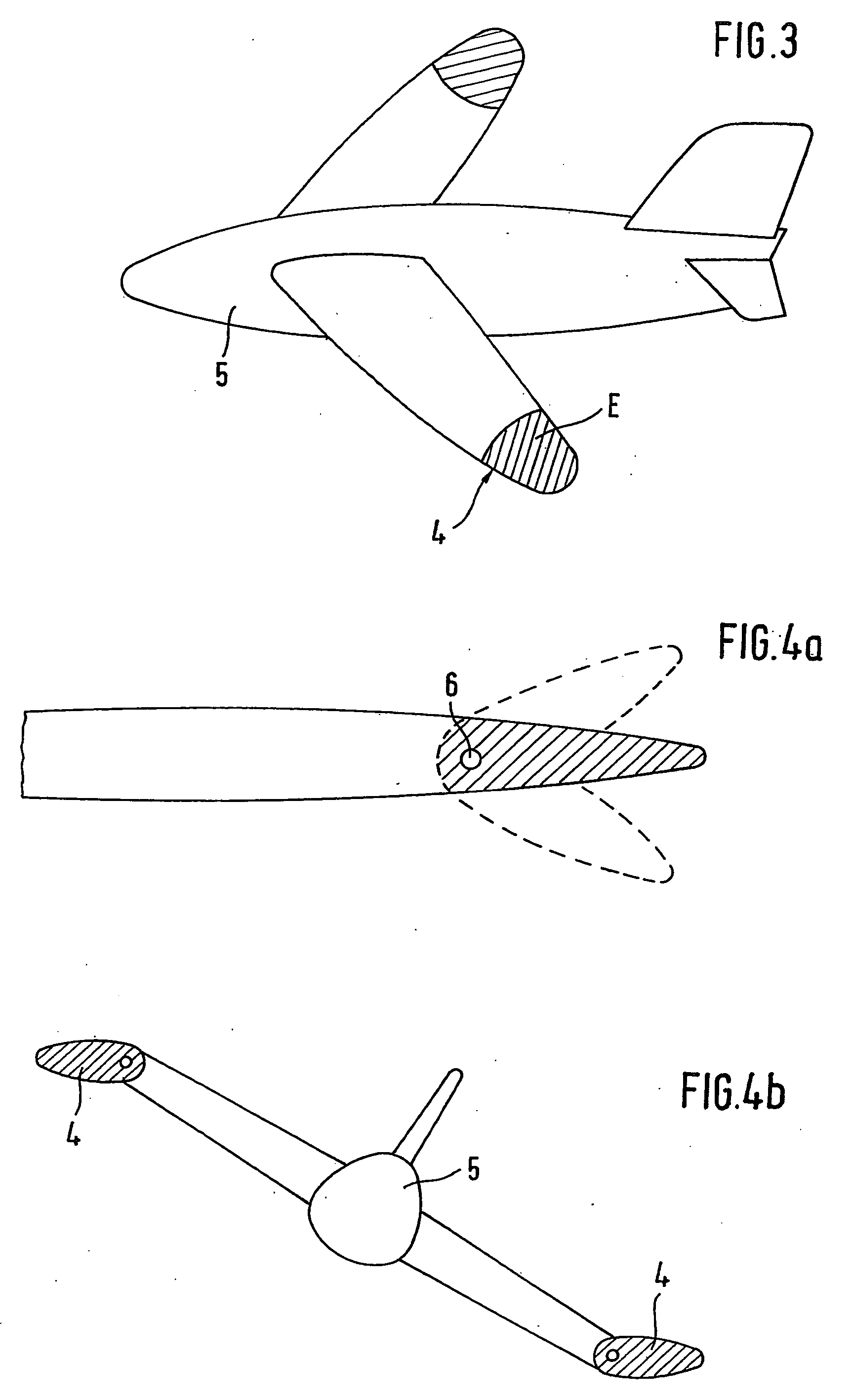Phase controlled antennae for data transmission between mobile devices
a mobile device and phase control technology, applied in the direction of antennas, antenna adaptation in movable bodies, instruments, etc., can solve the problems of limited extent of phase-controlled directional antennas, mechanically pivotable or phase-controlled directional antennas, and complex phase-controlled directional antennas, so as to reduce the localization of the antenna, reduce the localization of the ground, and reduce the effect of antenna localization
- Summary
- Abstract
- Description
- Claims
- Application Information
AI Technical Summary
Benefits of technology
Problems solved by technology
Method used
Image
Examples
Embodiment Construction
[0028]FIG. 1 illustrates an inventive phase-controlled antenna which is arranged in a plane spanned by the circles K and L and which extends approximately parallel to the longitudinal axis of a mobile device (which is not shown in greater detail here), in particular a flying device. The term longitudinal axis as used here is understood to refer to the main direction of movement of the respective device. Thus the plane E may be aligned preferably approximately horizontally or even vertically as well as in any intermediate position between the aforementioned positions.
[0029] A group of passive antenna elements 2, 2a, . . . , 2c is placed at least on an imaginary circle K around a centrally arranged active antenna element 1. The radius of the imaginary circle is a multiple n of a quarter of the operating wavelength λ where n=1, 2, 3, . . . The group may be designed so that it includes a small number of antenna elements 2a, 2b, 2c arranged with a distance between them (forming a “group...
PUM
 Login to View More
Login to View More Abstract
Description
Claims
Application Information
 Login to View More
Login to View More - R&D
- Intellectual Property
- Life Sciences
- Materials
- Tech Scout
- Unparalleled Data Quality
- Higher Quality Content
- 60% Fewer Hallucinations
Browse by: Latest US Patents, China's latest patents, Technical Efficacy Thesaurus, Application Domain, Technology Topic, Popular Technical Reports.
© 2025 PatSnap. All rights reserved.Legal|Privacy policy|Modern Slavery Act Transparency Statement|Sitemap|About US| Contact US: help@patsnap.com



